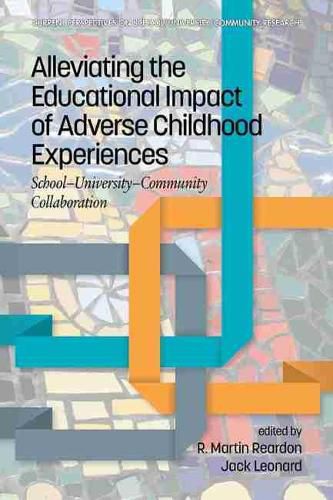Readings Newsletter
Become a Readings Member to make your shopping experience even easier.
Sign in or sign up for free!
You’re not far away from qualifying for FREE standard shipping within Australia
You’ve qualified for FREE standard shipping within Australia
The cart is loading…






This title is printed to order. This book may have been self-published. If so, we cannot guarantee the quality of the content. In the main most books will have gone through the editing process however some may not. We therefore suggest that you be aware of this before ordering this book. If in doubt check either the author or publisher’s details as we are unable to accept any returns unless they are faulty. Please contact us if you have any questions.
Adverse childhood experiences (ACEs) may include major disruptive events (e.g. earthquakes, hurricanes, or floods), but more pervasive is the impact of the daily stress of coping with one of more of the facets of family challenges (e.g. economic hardship and its attendant issues) or even dysfunction (e.g. parent or guardian divorce or separation, or living with neglectful or abusive parents). The use of the term Pervasive is warranted. For example, as highlighted in the Introduction, a 2019 study of the findings emerging from the 2016 National Survey of Children’s Health found that, among the more than 45,000 children on whom parents reported data, more than one-fifth experienced economic hardship and parent/guardian divorce.
The consequences for educators of children exposed to ACEs are far-reaching and have galvanized the attention of a broad swath of educational researchers and practitioners. As discussed in a 2019 insightful five-part series in Education Week (https://www.edweek.org/ew/collections/trauma-sensitive-schools/index.html), the consequences include the imperativefor teachers and educational leaders to adopt an informed approach to alleviating the educational impact of ACEs on their students while making provision for their own well-being. In this volume, various authors explore the educational context of ACEs and describe and reflect on their research-inspired endeavors to integrate the resources of schools, universities, and communities to sustain a safe and supportive educational environment for and build the resilience of all students.
$9.00 standard shipping within Australia
FREE standard shipping within Australia for orders over $100.00
Express & International shipping calculated at checkout
This title is printed to order. This book may have been self-published. If so, we cannot guarantee the quality of the content. In the main most books will have gone through the editing process however some may not. We therefore suggest that you be aware of this before ordering this book. If in doubt check either the author or publisher’s details as we are unable to accept any returns unless they are faulty. Please contact us if you have any questions.
Adverse childhood experiences (ACEs) may include major disruptive events (e.g. earthquakes, hurricanes, or floods), but more pervasive is the impact of the daily stress of coping with one of more of the facets of family challenges (e.g. economic hardship and its attendant issues) or even dysfunction (e.g. parent or guardian divorce or separation, or living with neglectful or abusive parents). The use of the term Pervasive is warranted. For example, as highlighted in the Introduction, a 2019 study of the findings emerging from the 2016 National Survey of Children’s Health found that, among the more than 45,000 children on whom parents reported data, more than one-fifth experienced economic hardship and parent/guardian divorce.
The consequences for educators of children exposed to ACEs are far-reaching and have galvanized the attention of a broad swath of educational researchers and practitioners. As discussed in a 2019 insightful five-part series in Education Week (https://www.edweek.org/ew/collections/trauma-sensitive-schools/index.html), the consequences include the imperativefor teachers and educational leaders to adopt an informed approach to alleviating the educational impact of ACEs on their students while making provision for their own well-being. In this volume, various authors explore the educational context of ACEs and describe and reflect on their research-inspired endeavors to integrate the resources of schools, universities, and communities to sustain a safe and supportive educational environment for and build the resilience of all students.